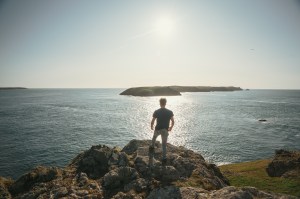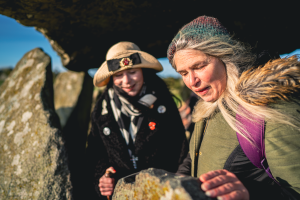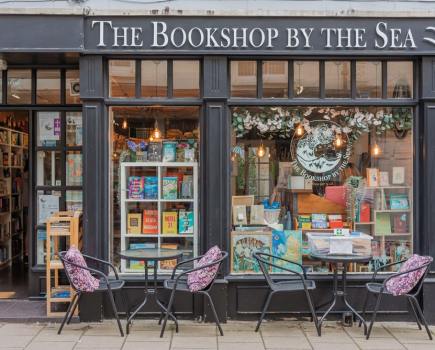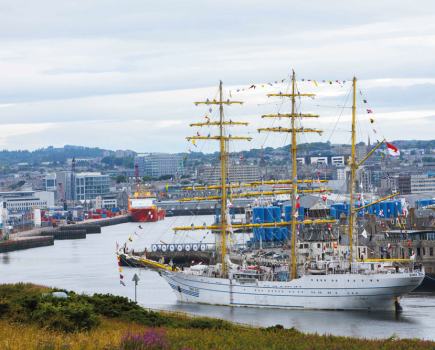SPONSORED BY

The coastlines of South-East Ireland and West Wales have much in common. This is hardly surprising. Because, before the waters rose, Wales and Ireland were joined together. Now, it’s the Irish Sea which connects the Irish counties of Waterford, Wexford and Wicklow and their Welsh counterparts: Pembrokeshire, Ceredigion, and Carmarthenshire.
If you sit for a moment and gaze across the waters, you begin to sense the special bond between these Celtic lands. And when you hear the stories of long-lost places beneath the water, you begin to realise that the striking coastlines you can explore today, were once very different. In Ireland, they still talk of the lost city of Bannow, which legend says vanished because of a tidal wave which buried it in sand and water. Whilst, in Wales, Cantre’r Gwaelod – in English, the Lowland One Hundred – is a fabled ancient sunken land beneath Cardigan Bay. At low tide, between Borth and Ynyslas on the Ceredigion Coast, you may be able to see the remains of prehistoric forest which is evidence it may be more than legend.
This deep bond is the inspiration behind Celtic Routes. An invitation to explore cultural and natural connections and to discover how a shared Celtic heritage, which goes back millennia, still shapes 6 vibrant counties today. Along these coastlines you’ll find endless beaches, secluded coves, and rocky headlands.
You’ll discover untamed beauty, unspoiled nature, and untold stories.
The Wales Coast Path traces the shoreline of Carmarthenshire, Pembrokeshire, and Ceredigion. Walking it you can appreciate the everchanging landscapes and seascapes. But you’ll never be far from the next welcoming place, with shops restaurants and inns and where you can swap stories of the day with fellow travellers. And chat with the people who call these places home.

In Pembrokeshire, it becomes the Pembrokeshire Coast Path National Trail which touches 58 beaches and 14 harbours. From several of these harbours you can take a boat to the many Islands off the coast. Be sure to take a licenced trip and enjoy the wildlife from a distance.
The Carmarthenshire stretch is some 67 miles long from Amroth in the west to Llanelli in the east. As you wander through Laugharne, you’ll appreciate why this coast inspired Welsh poet, Dylan Thomas. The waymarked, 3 mile, Dylan’s Walk is something not to be missed.
If your journey to Ireland is by car, take time to travel Ring of Hook Coastal Drive. It’s a great way to take-in the main sights along the peninsula. Around every other bend is a quiet beach, a crumbling fortress, a stately abbey or a seafood restaurant. And you’ll encounter the iconic Hook Lighthouse.
Waterford is Ireland’s oldest city, if you spend time here, you’ll be following in the footsteps of the Vikings who established the town in 914 AD. Strolling along Waterford’s harbour you’ll easily appreciate Waterford’s seafaring heritage. And, at the western edge you can enjoy the hustle and bustle of Dunmore East, still a busy fishing port.

Wicklow’s coastline stretches for 60km. In the North of the county, Bray is beautiful and easily accessible by the DART train from Dublin. It provides a welcome breath of fresh air away from the city. If you travel further south, you’ll find many wonderful walks. The Glen Beach Coastal Walk, near Wicklow Head, is a great example. The trail covers spectacular stretches of the Wicklow coastline. Here you can get closer to nature and discover local history.
No matter which part of our coastlines you explore, there is one thing which is constant. You may not be able to touch it or see it. But you can feel it and you can sense it. It’s that impression of being somewhere special. Somewhere timeless. It’s something which people have experienced through the ages. Something which makes people feel they belong here, and which draws people back. We call it the Celtic Spirit.
Find ways to discover the Celtic Spirit at CelticRoutes.info.











